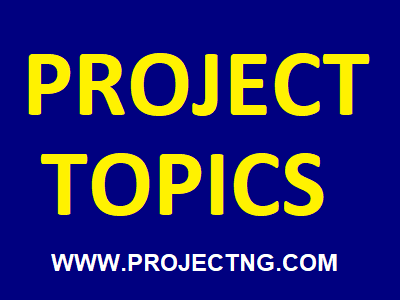A Multimodal Stylistic Study Of Selected Yoruba Television Advertisements
Arts Project Topics
Get the Complete Project Materials Now! »
Multimodal texts, particularly in advertisements, are used extensively in the media industry to convey information through the use of three sign systems; written language, verbal language and visual language, with music and songs. Some scholars considered only the language neglecting pictures and music, while other studies concentrated only on pictures of advertising without attention to the language. However, multimodal study of Yoruba television advertisements has not been accorded extensive considerations. Thus, a multimodal stylistic analysis that will account for all the features of advertisements mentioned above is desirable and necessary. Therefore, the aim of this study was to examine a multimodal stylistic analysis of selected Yoruba television advertisements, with particular reference to GSM. The objectives of the study were to: (i) investigate the registers; (ii) examine the metafunctions; (iii) identify the typography; (iv) determine the layouts; (v) analyse the linguistic features at different levels of grammar; (vi) assess the visual elements; (vii) appraise the audio elements; and (viii) evaluate the interconnectivity amongst the textual, audio and visual elements of Yoruba television advertisements.rnDifferent aspects of systemic functional theory as espoused by Kress and van Leeuwen 1996, Cartwright and Sturken 2001, Rose 2001 and Scollon and Scollon 2003 were adopted as the theoretical frameworks. A non-static multimodal text model was designed and used for this study. A qualitative research method was employed to investigate twelve recorded Yoruba television advertisements collected for the study; five from NTA Ilorin, Kwara State and seven from Kwara State Television Station, Ilorin.rnThe findings of the study were that: rni. mode in Yoruba television advertisements depicted inequality, informality and multimodality;rnii. interpersonal metafunction involvednot only the ways speakers and audiences interact, the language used to establish and maintain the relationship among them, but also the means to influence their behaviours;rniii. typographic features such as majuscles, boldfaces, coloured lettering, images and subtitles were systematically placed to help appeal to the audience;rniv. images in the advertisements were strategically positioned to pass important information about the products to the audiences; rnv. adjectives were prevalent in television advertisements;rnvi. visual features such as mood identify gaze as an attention-grabbing tool for attracting the audience;rnvii. audio features such as music and verbal expressions invite the audience, and gain their attention; andrnviii. visual, verbal and textual features systematically co-exist in the advertisements giving the description of the products being advertised.rnThe study concluded that Yoruba television advertisements were designed to inform, enlighten and captivate the audience about the product and its benefits. The visual aspect of TV advertisements offers additional reinforcements to fully connect with the audience’s mind. This is an advantage that television advertisement has over the print and radio advertisements. The study recommended that multimodal stylistics should be applied to other corpora such as book covers, stickers, billboards advertisements and artworks.
Be the First to Share On Social

Enjoying our content?
Don't miss out on new videos! Subscribe to our YouTube channel for more awesome content.
Subscribe Now!













